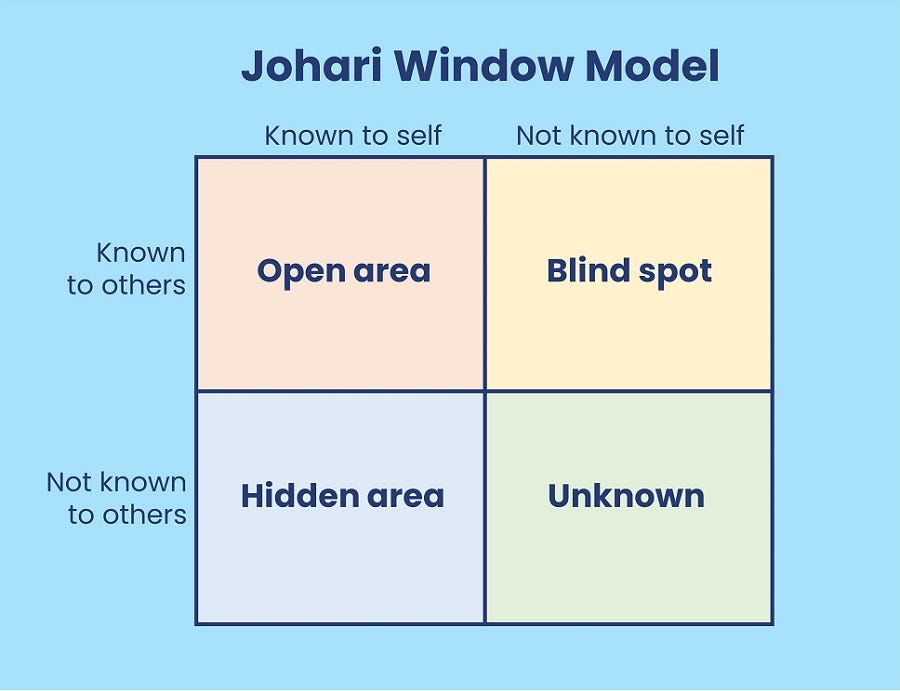Johari Window
Uncategorized
Introduction:
Understanding the Johari Window is akin to holding a mirror to one’s psyche, revealing both the known and the unknown facets of the self. Developed by Joseph Luft and Harrington Ingham in the 1950s, this model provides a framework for comprehending how individuals perceive themselves and are perceived by others.
The Johari Window comprises four quadrants: the Open, Hidden, Blind, and Unknown. The Open quadrant represents the aspects of ourselves that we are aware of and are also known to others, fostering transparency and mutual understanding. In contrast, the Hidden quadrant encompasses traits, emotions, or experiences that individuals keep concealed from others, often due to fear of judgment or vulnerability. The Blind quadrant consists of characteristics that others perceive in us, yet of which we may be unaware, highlighting the importance of feedback and self-awareness. Lastly, the Unknown quadrant holds the untapped potential and undiscovered aspects of the self, waiting to be explored through introspection and growth.
The practical applications of the Johari Window are vast and encompass personal development, interpersonal relationships, team dynamics, leadership, and conflict resolution. By expanding the Open quadrant through self-disclosure and seeking feedback, individuals can enhance their self-awareness, build trust, and cultivate deeper connections with others. Moreover, understanding the Blind quadrant can facilitate constructive feedback exchanges, fostering an environment of open communication and mutual respect.
In essence, the Johari Window serves as a powerful tool for self-discovery and personal growth, illuminating the intricate interplay between self-perception and interpersonal dynamics. By embracing the insights offered by this model, individuals can embark on a journey of self-exploration, enriching their lives and relationships along the way.
The Johari Window, comprising four distinct quadrants, each representing different facets of the self, the Johari Window invites individuals to explore the intricacies of their personality and how they interact with others.
Related Posts

Virtual Instrumentation
Virtual Instrumentation For those working in the field of measurement and control systems, the introduction of virtual instrumentation has ushered in a new era that is characterized by increased flexibility, efficiency, and innovation. The cutting-edge technology known as virtual instrumentation,

Unleashing the Power of Business Transformation Through Analysis of Big Data
Unleashing the Power of Business Transformation Through Analysis of Big Data In the beginning… In the fast shifting terrain of the modern corporate world, data has emerged as a strategic asset, and the capacity to capture and analyze large quantities
Books are better than movies.
“Books are better than movies”, is a comment often heard when comparisons are made between literature and its adaptations for the screen. Although different media and not easily compared, literature is still regarded as “better” or “finer” than movies, especially


